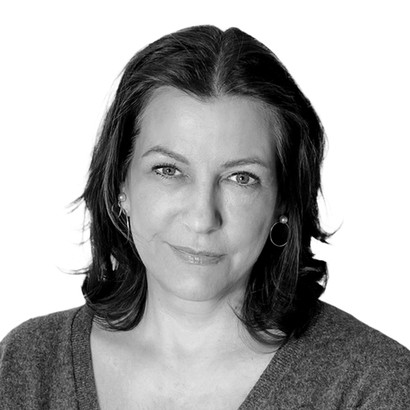For decades, Ralph Lauren’s show has been a focal point of New York Fashion Week. After a nearly 26-month hiatus, Lauren returned to the runway on Tuesday night, showing in a gallery at the Museum of Modern Art. The set mimicked his elegantly streamlined New York apartment. Soaring white walls and tailored seating contrasted with the black, high-shine floor; windows opened upon faux-skyline views.

“The modernness and the cleanness is where I was going,” Lauren said before he showed both his Collection and Purple Label lines. We met at a warehouse space at the Starrett-Lehigh Building, in New York’s Chelsea neighborhood, where the room bustled with typical pre-show activity, from last-minute fittings to final hair-and-makeup discussions.
The event at MoMA felt like a posh at-home gathering, for which New York mayor Eric Adams showed up, along with, among others, Jessica Chastain, Janelle Monáe, Lily Collins, Rachel Brosnahan, Henry Golding, and TikTok stars Wisdom Kaye and Nic Kaufmann.

The clothes, mostly black-and-white, were an ode to sophisticated New York via the Lauren lens, which is to say, aspirational not only in beauty but in serenity and elegant demeanor. The seductive evening looks achieved maximum impact with a minimum of yardage, their shapes alluringly lean and body-con.
But as idealized as Lauren’s world is, it’s not about dressing for events. In fact, he entered the industry in part as a reaction to tony designers’ excessive focus on evening. “When I started in this business, everything was about a gown,” he recalled. “It wasn’t about you—about people living a life. I saw clothes as living. Call it lifestyle, but that was my statement.” Thus, this collection also featured plenty of smart, sharply cut clothes for day, designed, he said, with “the modernness and sleekness that I feel looks right.”

Modernity is something of a grail for Lauren. Or more correctly, to be perceived as a modernist is a grail. For 55 years, Lauren has been the architect of a powerful, instantly recognizable aesthetic—a philosophy, really—triggering such diverse descriptives as “aspirational,” “optimistic,” “refined,” “rugged,” “elegant,” and “athletic.” But, somehow, “modern” seldom gets included in the litany. It frustrates him.
He maintains that modernity courses through the Lauren oeuvre, manifesting in stylistic timelessness and a level of quality intended to endure. At a moment when all of fashion is tripping over itself to prove its environmental concern, and the luxury world now zealously markets making “clothes that last,” Lauren has been there in earnest from the beginning. “It was never about fashion. It’s always about timelessness,” he said.

Nor has it been about clinical brand-building. In fact, don’t call the Ralph Lauren company a “brand.” “I hate that word,” he offered in a rare invocation of negative language. “It takes away the artistry of what you’re doing. It doesn’t say what the designer really does. It’s not a brand. It’s their life. It’s their heart. It’s their soul. They live and breathe it.”
The results of Lauren’s toil have certainly stood the test of time; he is widely admired by designers and top executives the world over. This apparently includes Bernard Arnault, and in a more than casual manner. In February, Axios reported that LVMH, of which Arnault is chairman and C.E.O., and the Ralph Lauren Corporation have been in discussions about a possible sale of Lauren to the French luxury conglomerate.

“When I started in this business, everything was about a gown.”
While at the time both sides declined to address the report, neither denied it. Now Lauren offered a quick deflection. “I am happy with how this company is running,” he said. “It’s independent. That works for us.”
Through the pandemic, Lauren stayed off the runway and, until recently, largely out of the press. He spent his time working away from the office in New York City. Initially, that meant Bedford in Westchester County, and then he “went where the weather went,” to his homes in Jamaica and Montauk, as well as the Double RL Ranch in Ouray, Colorado.
Yet Lauren bristled at the inference that he is retreating at all from his active leadership role. “I haven’t been away,” he insisted. As if on cue, a model emerged in a shimmering black sequined tall-drink-of-water gown. “Look at this. Does this look like retreat?”
While out of town, Lauren continued his eagle-eyed oversight of the company’s offerings. He designed three rounds of Collection not shown on the runway, as well as frequent refreshes of the company’s various other lines. He stayed in constant touch, through, he says, working “with Zoom machines and, I mean, things I never thought I would be doing.”

What Lauren does, and has always done, is make clothes for living. He closed his show with Italian model Vittoria Ceretti wearing a feisty hybrid look, a tuxedo with items from his collaboration with Major League Baseball—a Yankees cap and baseball jacket, its back emblazoned with Ralph Lauren encircling the team’s storied “NY” logo. He loves New York.
Bridget Foley is a longtime fashion journalist who spent more than 20 years as a critic and editor for Women’s Wear Daily


